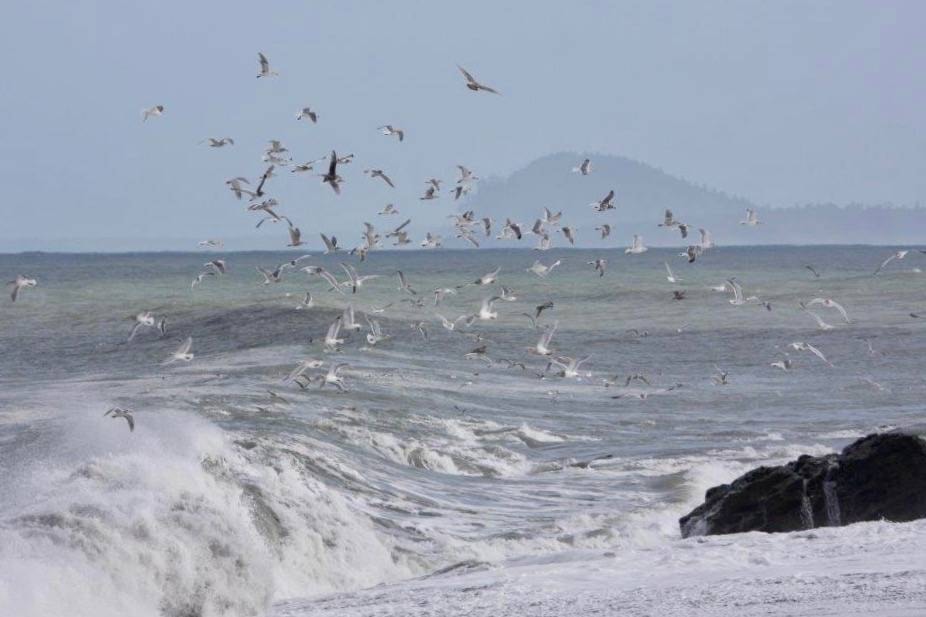By Margo Hearne
The sun pours down like honey. Birds at the feeder, teal lined up along the water’s edge, and siskins twittering in the trees. But it was quite a week. Huge waves roared onshore during the full-moon tides. High winds and slanting sleet made it almost impossible to see anything but the fact North Beach wasn’t where the birds were. They were all at Skonun Point — the original name on the nautical charts for “Ops Beach.” Skonun is one of the main gathering places for birds along the North Coast, for they need to have an undisturbed resting site when the tide is high. “Points” and “spits” are their preferred places.
Most of the shoreline from Langara Island to Wiah Point is rocky except for a few small areas, but when the beach begins on the east side of Masset Inlet there’s only Skonun and Yakan Points to land on. All the rest is sand or shingle as far as Rose Spit. It is a spectacular area, there are few places like it in the world, and it attracts birds from all over. Sandpipers and gulls feed along the beach when the tide permits, then they hunker down to wait it out. It’s just as well the points are there, for under the onslaught of this week’s big tides combined with big northeast seas there wasn’t an inch of beach left.
There must have been around 3,000 gulls at Skonun. We had not seen such numbers all winter, so where had they come from? We can’t say for sure, but maybe the recent westerly trend swept them down from the Gulf of Alaska and the Bering Sea. The wind would also have driven the feed before them and the churning sea would have mixed up all sorts of foodstuffs in the relatively shallow waters of Dixon Entrance. So the birds arrived. It was all action as they called and swung through the seething air. Dunlin, Black Turnstones, and Sanderling dashed over the breaking waves. They were off somewhere else, perhaps to wait it out along the rocky shores of Wiah Point.
But the stars of the show were gulls. Glaucous-winged, Mew, Herring, Thayer’s, Western and quite possibly, Slaty-backed. Slaty-backed Gulls are rare in these parts, but a few have shown up over the years. They have black backs unlike the more common Thayer’s or Glaucous-winged, which are both grey-backed. When seen in a crowd a Slaty-backed can be fairly easy to pick out, that is, if there are no Western Gulls around. They also have dark, but not quite so dark, backs. There are subtle other differences as well — leg and eye colour — and this is where I usually give up totally on gulls and just admire the grandeur of the mighty world.
It can be, for some, a fun experience to join the ranks of the “gull identity challengers.” It is never boring — gulls change with the seasons and the first, second- and third-year gulls of the same species change from year to year. Then there are the adults, the easiest to recognize. They are all done up in their best feathery attire, ready for the nesting season. Haida Gwaii is one of the best places in Canada to learn about gulls for, although they are often given a bad rap just because they’re gulls, they are worth our attention. They are a measure of the health of the planet. If there were no gulls around, the sea would be dead.
